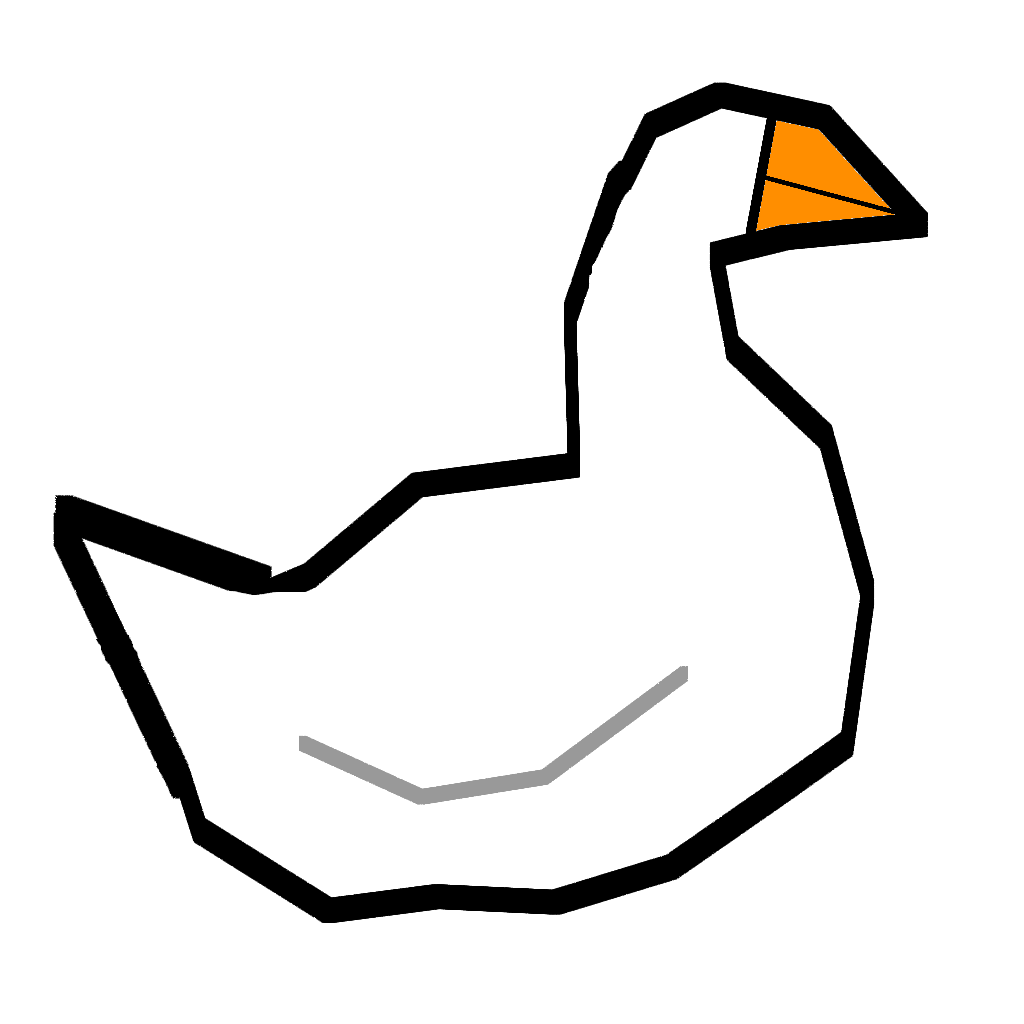deleted by creator
Change is hard. In Europe we wanted to drop daylight saving time, but nobody could agree on which hour to keep. So it’s here to stay. Sigh.
Same thing in North America.
Actually no. This year was the last spring forward, at least for the US. We’re not falling back to standard time this year and never will again.
Leave it to the US to, in the choice between a “standard” thing and an off-standard thing to choose the off-standard option.
they didn’t really try. it’s more of a suggestion (and still is). metric is standard in the US within science, just not among regular folks because commercially it’s not as dramatic, i.e. news stations dramatize 100F!!! since it sounds way more dramatic than 38°C. if the news and commercial products started using metric, people would quickly switch over.
unfortunately a lot of imperial shit has started migrating to europe due to chinese products being produced for the US market and then sold in europe as an afterthought using imperial units.
deleted by creator
@sibachian and that’s better. You can easily tell, 100 is too hot to play outside, and 0 is too cold to play outside and everything else is fine.
pft, you can always dress for the cold. heat is what kills you.
Someone should set up a new “shitamericanssay”
Ik it exists on reddit, but it would be nice to not make it around Americans.
I had once heard described that fahrenheit’s best feature is that you can go “oh, 1-100, ‘sheesh, that’s really cold!’ to ‘hoof, that’s pretty hot!’” and yeah, while I was in the US where most temperatures (RIP Florida) change all the time, that sure was convenient.
However, living in a country that always stays in the 80-100 range, the ‘oh fuck, the water’s freezing’ to 'oh fuck, the heat death of the sun is upon us’ range is a MUCH more useful scale to knowing if we’ve been struck by some sort of apocalyptic event today
We should just start using Kelvin instead
Celsius is human friendly Kelvin
US centrism summed up.
!ShitAmericansSay
there are 2 countries in the world that use Fahrenheit I know off the top of my head.
- USA
- Liberia (Used to be USA colony. Slaves were sent there after they were freed after the civil war)
More than 1 country in the world is retarded
Some older people in the UK still prefer Fahrenheit, Celsius is still the official/default unit however.
A politician here recently tried to promote returning the UK to Imperial units, it has gone nowhere so far.
Are you serious? That’s pretty funny!
It does seem superior for the weather and cooking.
Having the weather between 50-100 instead of 10-40 kind of makes sense.
And for the cooking, having the steak temperature at 130-135 or 135-145 is clearer than 54-57 or 57-63.
Not that I’d think it would make sense to change, but it just seems plain stupid how we like to pretend the imperial system would be inferior and stupid.
Oh yeah that’s why it freezes at a random 32 degrees. I generally live between -30 C and +30 C.
The whole world swapped to metric for a reason.
I live in the United States and although I grew up here using Fahrenheit, I switched to Celsius almost 10 years ago. Part of my reason for switching was the rest of the world was using Celsius and every time they would mention the temperature, I had no clue if that was very hot, or just right and kept having to convert, so since there were not that many countries that used Fahrenheit, I switched. I still know what the comfortable range is in Fahrenheit, but now I also know in Celsius as I use it every day. Also, I no longer appear to be an old curmudgeon that is resistant to using a system the rest of the world already uses.
I did exactly this but with 24 hour clock lol
Absolutely no one
Having the freezing point of water be at 0 instead of 32 just makes infinitely more sense.
Celsius is also kinda arbitrary, but at least it sets its 0 and 100 to very fundamental, observable temperatures, namely the points where the state of matter of water changes. There are more constraints to it of course, in particular atmospheric pressure, and the modern definition of Celsius is actually purely based on Kelvin (which in turn uses the Boltzmann constant), but as long as you’re not high up in the Andes, everybody can observe a pretty good approximation of it.
Its prevalence is also the outcome of a long process of many different scales. In 19th century Europe, before Celsius completely took over, Réaumur was also very popular. It set 0° at the freezing point of water and the boiling point at 80° under normal atmospheric conditions. Thinking about it, it’s quite wonky to do that, but at least it’s easy to convert to and from Celsius. On the other hand, the similarity in temperatures makes it slightly harder for plausibility checks.
I ran into this when researching the history of some stuff and the specific scale was not always included, but the temperatures in the particular context both made sense as Celsius and Réaumur. That’s when you then have start digging through a whole early 19th century 500 page book printed in a German Gothic font just to see whether the specific temperature scale is mentioned anywhere.
Fahrenheit’s 0 is the freezing point of water - salt water that is. Not that I think it’s better, just that there was some thought put into it.
It… isn’t. That would change wildly depending on which sea/ocean you get your saltwater from (more salt = colder freezing point).
It really is defined relative to a very specific brine mixture (in the most scientifically generous origin story - some say he literally just measured the coldest winter day he could). Well except it isn’t anyway, because like all US units nowadays it’s defined against metric units (namely the Kelvin, just like 0°C is actually defined to be 273.15 K).
There is no freezing point of salt water. Cause water can have a very small or very large amount of salt in it. There isn’t even a “default” amount of salt that’s just assumed.
I like to refer to them as Freedom units and Communist units (in jest, obviously). I will say, though, that Fahrenheit feels like a more precise scale for measuring temperature even if the units are goofy.
What additional arguments besides personal experience would you give to back this precision claim?
Temperature scales are arbitrary by nature, and the criteria behind their definition can be useful or not. Fahrenheit’s isn’t that much useful compared to Celsius’ or Kelvin’s.
I’m not arguing on Fahrenheit’s behalf or saying it IS more precise. I just said it “feels” more precise because you have finer increments in whole numbers. 70 degrees F is about 21 degrees C while 90 degrees F is about 32 degrees. 20 degrees of increment in F versus 12 in C which feels more precise. It’s the same way metric length measurements feel more precise because there are whole number millimeters rather than fractional inches.
I have no strong opinion any one way, other than I feel like everyone should endeavor to be comfortable converting between various systems of measurement.
You can simply use as many decimals you want to make Celsius more precise. You don’t see it used in general because it really isn’t needed.
The little digital thermometers I have around the house read to one decimal place. The precision argument is just bizarre.
F is kinda nice for weather as a scale of 1 to 100 of really cold feeling to really hot feeling. But for anything scientific or calibration related, C is great
Disagree. Celsius is super helpful for determining if it’s gonna snow or not, a key weather thing where I live. Humid and cold and below 0? Snow. Humid and cold and above 0? Rain or freezing rain.
Also helps with plants. Below 0? Frost.
I’d argue you can’t get more intuitive than 0 is cold, below 0 is very cold. Celsius also plays nice with round numbers, every 5 or 10 degrees is a change in feeling. 0 is cold, 5 out is cooler, 10 out is cool, 15 is moderate, 20 is comfortable, 25 is room and warm, 30 is hot, 35+ is very hot. Every ten degrees we’re doing big changes. 0 is frozen, 10 is cool, 20 is comfortable, 30 is hot. 32 being frozen doesn’t feel as intuitive.
As someone who moved to the US later in life, I learned to use fahrenheit because there’s no way to talk to anyone about the weather or cooking otherwise.
If you need to do the same one day, don’t bother trying to convert in your head. Just learn the numbers conversationally. Familiarize yourself with how the weather feels with the number the weather app shows.
I can’t convert at all but I can use both C and F in conversation because one rarely needs exact numbers anyway. You learn the ballparks pretty quick.
I find the conversion between the two easy enough to do it my head.
This isn’t exact but is close enough for conversations and 99% of my needs.
(Temp in F - 30) / 2Examples
70F: 70F - 30 = 40 40 / 2 = 20C 10F: 10F - 30 = -20 -20 / 2 = -10The actual number is 21 / -12 but this is close enough for me 99.9% of the time
When you actually need to convert, sure. For conversation, try it my way. It’ll be noticeably more efficient.
Thank you, this is a a great idea! I’ve found these common temperatures online, in case anyone wants to learn them:
Description Celsius (°C) Fahrenheit (°F) Absolute Zero -273.15 -459.67 Freezing Point of Water (at sea level) 0 32 Average Room Temperature 20-22 68-72 Body Temperature 37 98.6 Average Summer Day 25-30 77-86 Heat of a Desert 40-50 104-122 Boiling Point of Water (at sea level) 100 212 Highest Recorded Earth Temperature 56.7 134 Average Summer Day 25-30 77-86
See, that’s the problem with these “Fahrenheit is more intuitive” arguments. They are catered to a very specific country with a very specific climate. For me, 25-30 ºC is an average late spring day.
It’s intuitive to those who grew up using it. For me, Celsius is much more intuitive because people around me used it all my life and refer to common temperatures in Celsius.
So I think intuitiveness is very subjective and not a good criterion to judge a unit by.
I don’t care how many football fields worth of sun we’ll get today.
Fahrenheit is better for weather, and I’ll fight anyone about it.
We use Celsius in the lab because it makes math easier, it’s great.
But Fahrenheit is basically a 0-100 scale of how hot it is outside and that makes perfect sense for describing outside conditions relative to human sensory perception.
Fahrenheit is better for weather
You’re just used to it. The rest of the world have 0 problems using it for weather.
Fahrenheit is better. Fight me
Ha! You can’t just say “fight me” and then disappear! What are your arguments?
The range for livable temperatures follows a more reasonable scale. Hot is really high numbers. Cold is low. The exact temperature is more precise because the range is larger.
Celsius is fine for scientists but for the regular person Fahrenheit has a better range.
Also I’m biased.I’m also biased.
But:
- Celsius is easy to understand, even for children: water freezes at 0°C, boils at 100°C.
- It is understood by more people in the world.
- If the US used Celsius, understanding scientific papers and data would be easier for common people.
- In Celsius, the range of livable temperatures for humans (-20 to 40°C) still gives plenty of precision. Additionally, each step in the Celsius scale corresponds to a bigger change in “feel” of the temperature, which leads to a more intuitive understanding of temperature changes.






















